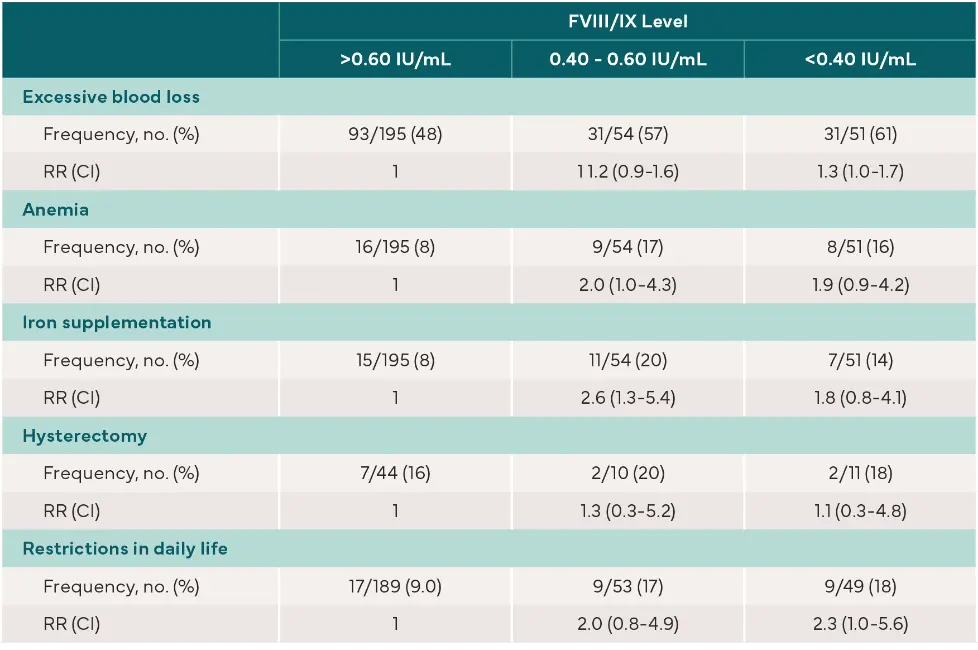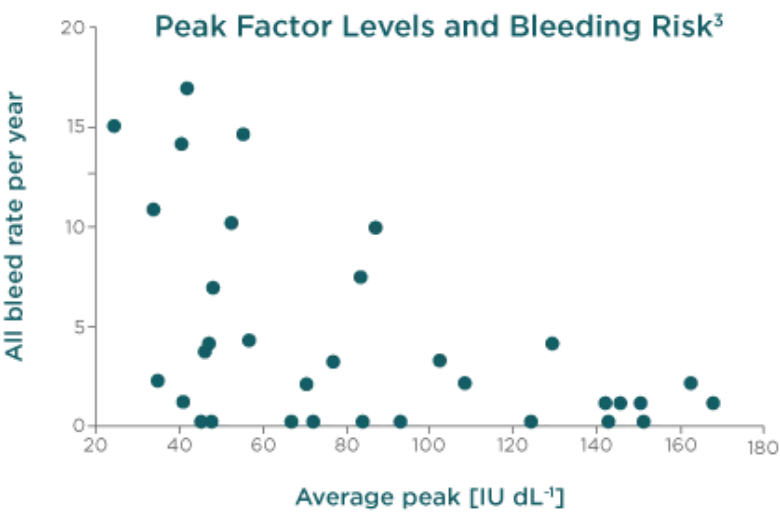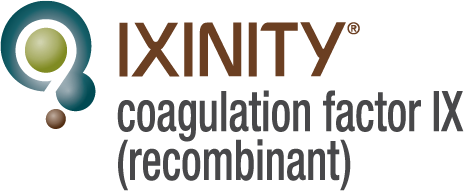Clinical Cases in the Management of Hemophilia B
Welcome to Clinical Cases in the Management of Hemophilia B. Delve into patient cases inspired by the challenges clinicians see in practice. Learn from other experts on treatment approaches that may benefit specific patient types.
An active adolescent with sport- related bleeding OPEN TO LEARN MORE![]()
A woman with hemophilia and heavy menstrual bleeding OPEN TO LEARN MORE![]()
An adult patient transitioning from a sedentary to a more active lifestyle OPEN TO LEARN MORE![]()
EXPLORE THE CASES
Pharmacokinetics of EHL and bleeding risk at the end of the dosing interval

- FIX levels may fall below 3% over the last couple of days of the dosing interval with an EHL product and this might explain Jason’s bruising and the bleeding event that he experienced1
- Experts have stated that we need to gain experience about breakthrough bleeds with the new EHL concentrates with longer decay curves and fewer peaks, not least in physically active persons2
JASON
- Identify key issues in adolescents with sport-related bleeds
- Recognize the zero-bleed goal for patients like Jason
- Review the selection of IXINITY from data on reaching peak factor levels
“And in Jason, what we see is that he may have up to 48 hours where his factor level is less than that three percent, which is a trough goal to prevent bleeding.”
Presented by Danielle Nance, MD
Banner MD Anderson Cancer Center, Gilbert, Arizona
EHL = extended half-life; FIX = factor IX
References: 1. Fischer K, et al. Lancet Haematol. 2017;4(2):75-82. 2. Ljung RCR. Paediatr Drugs. 2018;205:455-464.

to find an IXINITY Hemophilia Territory Manager in your area


to have an IXINITY Hemophilia Territory Manager contact you
Consequences of menstrual bleeding in women with hemophilia

CI = confidence interval; FIX = factor IX; FVIII = factor VIII; RR = relative risk.
Reference: 1. Plug I, et al. Blood. 2006;108(1):52-56.
TAYLOR
- Recognize and manage heavy menstrual bleeding in women with hemophilia B
- Understand the potential consequences of menstrual bleeding in this population
- Review the rationale for treatment at the first sign of bleeding
“Taylor is a carrier of the hemophilia B gene and with her bleeding manifestations is justified to be called a female with hemophilia B.””
Presented by Craig Kessler, MD
MedStar Health, Georgetown University, Washington, DC
Change in hemophilia management

- A switch from on-demand treatment to prophylaxis would provide protection against joint damage and other bleeds for Paul since he plans to become more active
- This is particularly important since Paul is overweight and this might increase his risk for joint bleeds1
- It has been suggested that PK parameters other than trough levels, such as peak concentration or clearance, may be important determinants of treatment efficacy2,3
- It has been shown that higher peak FVIll levels are associated with lower bleeding risk in patients with hemophilia A2
PAUL
- Recognize the value of PK parameters beyond trough levels, such as peak concentration and clearance, as important determinants of treatment efficacy
- Recognize the benefit of reduced bleeding in helping patients with cardiovascular risk to make changes
- Consider prophylactic treatment for patients seeking to be more active
“The peak factor activity levels decrease risk of bleeding, and in patients with hemophilia B that decreased bleeding translates into improvement in overall pain, and reduced bleeding events lead to improved performance of joints and activity levels.”
Presented by Danielle Nance, MD
Banner MD Anderson Cancer Center, Gilbert, Arizona
FIX = factor IX; FVIII = factor VIII; PK= pharmacokinetic.
References: 1. Wang M, et al. Haemophilia. 2020;26 (Suppl 1):20-30. 2. Valentino LA, et al. Haemophilia. 2016;22(4):514-520. 3. Ljung R, et al. Haemophilia. 2013;19(4):481-486.

